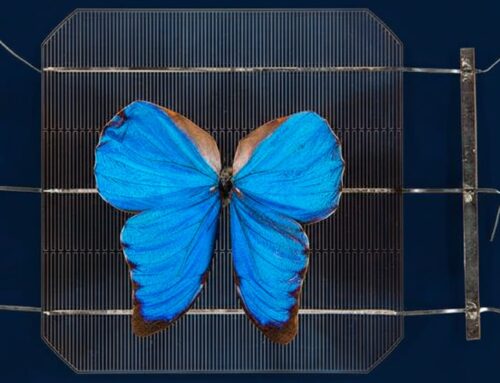Moon Power Becomes Reality as These Islands Harness Lunar Energy to Produce Electricity an
May 4, 2025
| IN A NUTSHELL |
|
In a world striving for sustainable energy solutions, the Faroe Islands Space Program emerges as a groundbreaking initiative that aims to harness the Moon’s gravitational pull to generate electricity. This innovative project doesn’t venture into outer space but rather focuses on utilizing the tides, driven by lunar forces, to power the planet. At the heart of this endeavor is the Luna 12, a tidal kite that transforms ocean currents into renewable energy, offering a glimpse into the future of clean energy.
The Faroe Islands: A Unique Setting for Tidal Energy
The Faroe Islands, nestled in the North Atlantic Ocean, serve as a perfect backdrop for the development and testing of the Luna 12 tidal kite. This archipelago has long relied on imported fossil fuels, but it now aims for 100 percent renewable energy by 2030. The islands’ unique geographical location presents an ideal environment for harnessing tidal energy, offering both high energy density and low visual impact due to the underwater operation of the tidal kites.
The collaboration between industry leaders SKF, Minesto, and Sev has enabled the Faroe Islands Space Program to effectively utilize the abundant tidal currents around the islands. SKF’s expertise in reducing friction and energy consumption is pivotal. They developed the bearing and sealing systems for the kites, ensuring their efficient operation. This partnership underscores the significance of decentralized energy production in islands and remote areas, paving the way for a greener future.
Luna 12: Revolutionizing Renewable Energy
The Luna 12 tidal kite is a testament to the potential of tidal energy. Developed by Minesto, this innovative technology leverages the Moon’s gravitational pull to generate electricity consistently. Unlike solar and wind energy, which depend on weather conditions, tidal energy offers unparalleled reliability and predictability. It can be forecasted with remarkable accuracy, often up to a century in advance, making it a dependable source of renewable energy.
During its pilot phase, Luna 12 proved its cost-effectiveness by supplying continuous electricity for four months. With a rated power of 1.2 megawatts, it can power approximately 200 villas annually. The success of Luna 12 demonstrates the potential for large-scale deployment, offering a viable alternative to traditional power systems. As the Faroe Islands Space Program scales up, the goal is to implement a 200 MW tidal energy array, meeting 40 percent of the islands’ electricity needs by 2030.

Global Implications of Tidal Energy
The implications of the Faroe Islands Space Program extend far beyond the archipelago. According to Minesto CEO Martin Edlund, the worldwide potential for tidal energy is staggering, with an estimated 650 gigawatts of technically exploitable capacity. This figure surpasses the current global nuclear power capacity, highlighting the untapped opportunities for tidal energy in ocean-based economies and fossil-fuel-dependent nations.
Edlund envisions a future where Luna 12 technology can replace coal power capacity under development worldwide. The predictability and reliability of tidal energy, combined with storage solutions like batteries or green hydrogen, offer a sustainable pathway to meet global energy demands. The success of the Faroe Islands Space Program serves as a beacon of hope, exemplifying how innovative technologies can pave the way for a cleaner, greener planet.
| Key Features | Details |
|---|---|
| Rated Power | 1.2 megawatts |
| Electricity Supply | 200 villas annually |
| Global Potential | 650 gigawatts |
| Faroe Islands Target | 100% renewable by 2030 |
Challenges and Innovations in Tidal Kite Technology
Despite its promise, the Luna 12 tidal kite faces challenges inherent in operating in the harsh ocean environment. With depths reaching 200 feet and speeds up to 18 miles per hour, Luna 12 must withstand intense conditions. SKF’s advanced sealing systems prevent seawater intrusion, ensuring the kite’s durability and efficiency.
Yvonne Rydberg, an Application Engineer at SKF, emphasizes the importance of selecting the right bearings and seals to prevent corrosion and maintain lubrication. The use of sensors for real-time performance monitoring and wear detection further enhances the kite’s reliability. These innovations underscore the resilience of the Luna 12, designed for long-term operation in one of the world’s toughest environments.
As the Faroe Islands Space Program continues to evolve, it raises a compelling question: Could the success of Luna 12 be replicated in other tidal-rich regions worldwide, transforming the global energy landscape? The potential is immense, and the future of renewable energy may very well depend on the tides. How might this shift impact the energy strategies of nations across the globe?
Did you like it? 4.7/5 (22)
Search
RECENT PRESS RELEASES
Related Post


